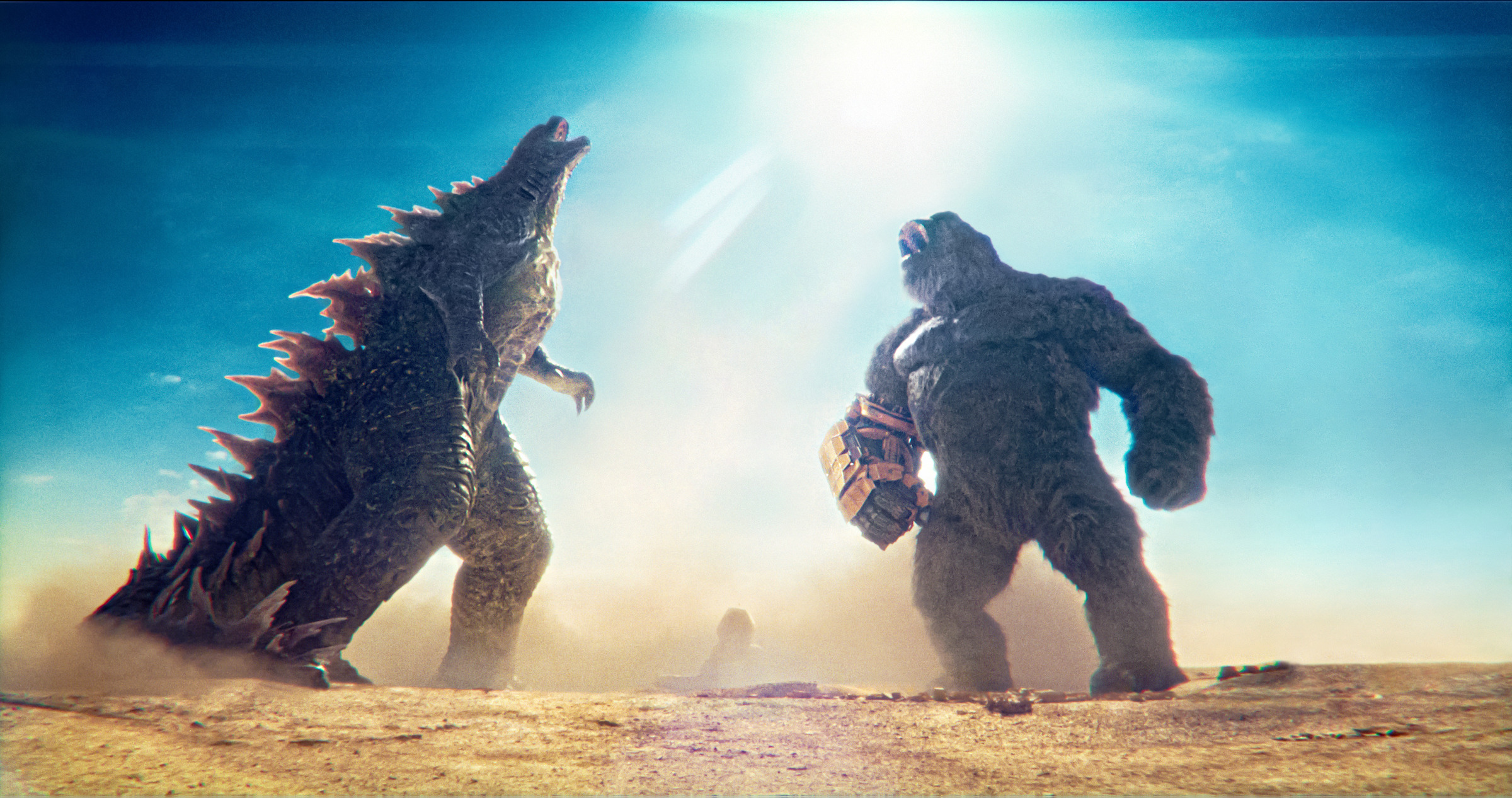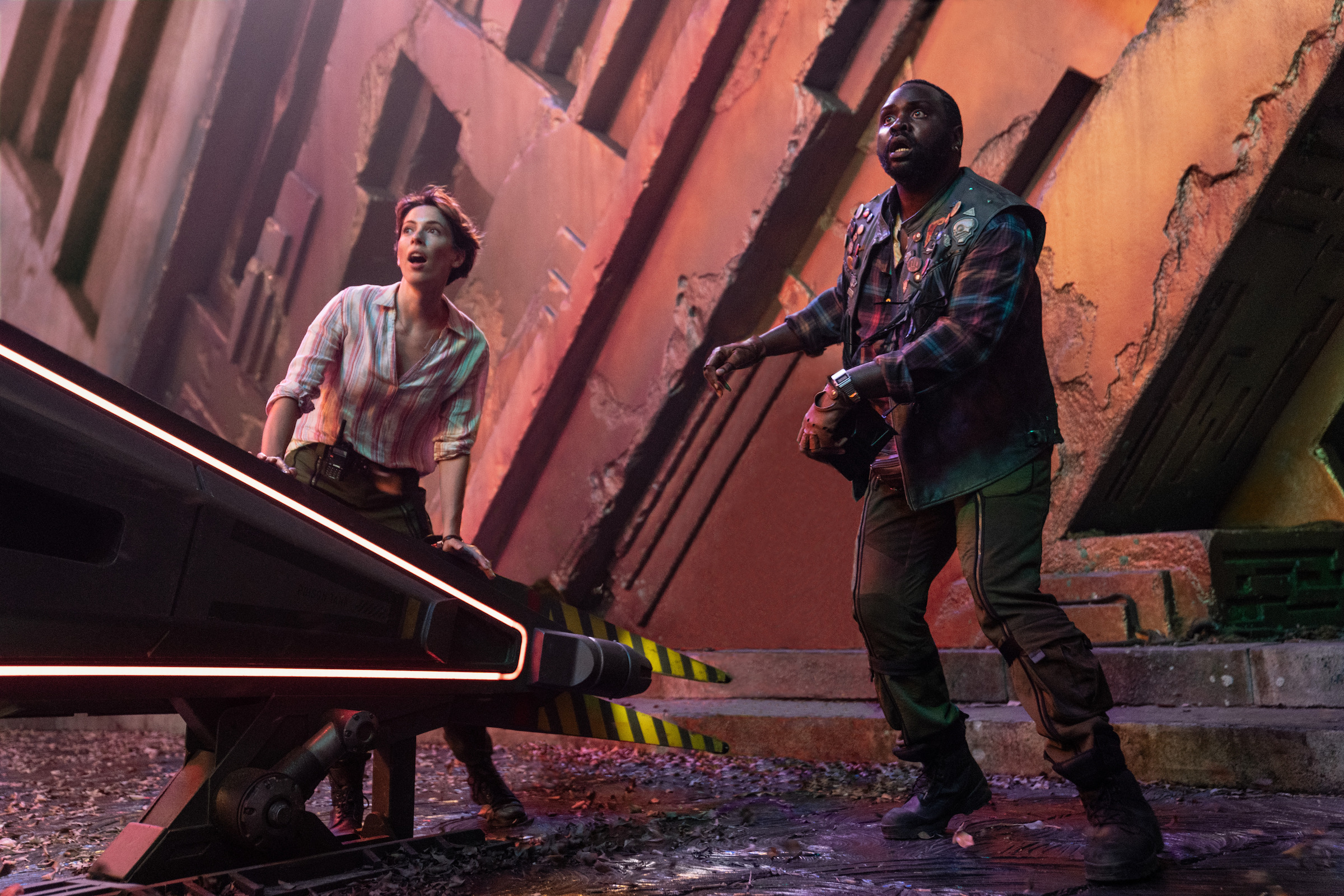Godzilla has defeated just about anything that humanity and monsterkind have thrown at him. He stomps on tanks and knocks fighter planes out of the sky with ease, and he’s trounced King Kong and Mechagodzilla. If there’s a foe that Godzilla can’t seem to beat, though, it’s inertia. The latest movie, Godzilla x Kong: The New Empire, is tremendously, though certainly not unenjoyably, stupid. It also comes just a few months after the most recent Japanese Godzilla film, Godzilla Minus One, which was a critically lauded and dramatic film about war, duty, and trauma as the kaiju attacked postwar Tokyo. How is it possible that such a silly Godzilla and such a somber one can both exist in theaters a mere four months apart? There’s no paradox: the franchise has always had room for both sorts of movies. The key difference is that Minus One was a standalone film, while GxK is the fifth installment in the MonsterVerse. Three quarters of a century of Godzilla has shown us that when Godzilla gets sequels, things invariably get dumb.
Godzilla x Kong, now in theaters, doesn’t have any illusions that it’s a serious movie. The direct follow-up to 2021’s Godzilla vs Kong (which sees the return of that film’s director, Adam Wingard), the blockbuster has the titular monsters fighting an evil version of Kong and a lizard with ice breath, throwing their CGI bodies against each other in defiance of both physics and taste. At one point, they’re fighting inside hollow Earth in zero gravity. While a hoot to watch, they are weightless not just literally but metaphorically. Compare that to Godzilla Minus One, the first Godzilla movie to win an Oscar for special effects but whose computer-generated monster is much more than just flashy visuals. Minus One’s Godzilla is a horrifying presence, representing the specter of the nuclear bomb and the lingering psychic wars from Imperial Japan’s disastrous war.
Minus One is an objectively better film than GxK, but that isn’t to say that the latter is getting Godzilla “wrong” while the former is doing the King of the Monsters justice. There’s a rich history of both tones in the franchise, the silliness outnumbering the somber ones by a huge factor.

“You can just take Godzilla Minus One, and my film Godzilla x Kong: The New Empire, and these two films couldn’t be more tonally different from each other. I think that’s what’s so cool about Godzilla,” Wingard recently said in a conversation with Minus One director Takashi Yamazaki, part of a nifty bit of mutually beneficial promotion. Yamazaki, whose movie is much more in line with the original 1954 Godzilla, similarly praised GxK for channeling “the psychedelic Godzilla from the Showa era,” which was “also an important element of Godzilla.”
The Showa era that Yamazaki references is the first 15 Godzilla movies, released from 1954 through 1975. The original Godzilla, which came out less than a decade after Japan was hit with two atomic bombs (and countless firebombings, also deadly), is a legitimate horror movie. Godzilla is not a protector of humanity duking it out with another rubbery monster; he is death incarnate, channeling an all-too-recent history. But, starting with the first sequel, 1955’s Godzilla Raids Again, things got less serious and would rapidly get sillier from there as the emphasis shifted from symbolism to action. Raids Again was the first time Godzilla fought another monster (Anguirus, who kinda resembles the dinosaur Ankylosaurus), and while he was still a bad guy, the focus was no longer his horrific power as a symbol but this giant-sized kaiju brawl.
He would then fight Kong in 1962’s King Kong vs Godzilla, and by the time of the fifth Godzilla movie, the big guy had fully transitioned to being a good guy. It’s easy to see why. Godzilla was popular, and it made more sense to position him as a prizefighter ready to best his latest foe—especially as he was becoming especially popular with children. Several movies at the peak of the Showa Era were explicitly kids’ movies. Eventually, though, audiences began to burn out on this Godzilla, and after Terror of Mechagodzilla sold the fewest tickets of any Godzilla movie, ‘75, the franchise went dormant for nearly a decade.
When Godzilla returned in the aptly named The Return of Godzilla in 1984, he was back to business. The first installment in the Heisei Era (these periods are named after who was Japan’s emperor when the films were coming out), The Return of Godzilla simply pretends that those 14 increasingly silly Godzilla movies don’t exist. It’s a direct sequel to the ‘54 Godzilla, and while it’s not as grim as that picture, it takes Godzilla very seriously. There are no other monsters for him to battle; instead, the movie sees humanity reckoning with the return of a dangerous threat, with the central metaphor updated to reflect new nuclear fears. The United States and the Soviet Union’s Cold War bickering is nearly as big a threat as Godzilla himself, a subplot that gives the movie some extra weight and topical relevance.
However, as the Heisei Era continued, it devolved into increasing silliness just like the Showa Era before it, albeit with consistently higher production values. Godzilla was still a bad guy when he survived to fight a giant mutated rose imbibed with the spirit of a dead woman (long story) in the next film, Godzilla vs. Biollante, but by the end of this iteration of the franchise in 1995, he was more or less back to being a good guy who fought whatever worse monster was assailing Earth—including SpaceGodzilla, an especially silly foe who was Godzilla, but from space.
If the MonsterVerse resembles anything right now, it's the Heisei Era. The 2014 American Godzilla that kicked it off wasn’t nearly as serious as the original masterpiece or even The Return of Godzilla, but it has a sense of scale, importance, and a feeling that it's set in the real world. Compare that to four films later, when characters are popping back and forth between their high-tech secret bases on the surface and also inside of hollow Earth and strapping a robotic power glove onto Kong’s arm so that he has a power-up to fight the next monster. Over the course of both series, the role of an anti-monster agency increasingly took prominence (the United Nations Godzilla Countermeasures Center in the Heisei era, Monarch in the MonsterVerse), and GxK introduces yet another similarity, as both series have made telepathic humans who can communicate with the monsters load-bearing characters.

Both the Hesei Era and the MonsterVerse offer plenty to love. (Personally, I am not sure how ironic I’m being when I say Godzilla vs. Kong is a five-star motion picture.) They’re just not serious movies. All of the serious Godzilla movies are either standalone or the first installment in their respective continuity; they’re unburdened by having to up the ante from the previous movie. For instance, 2016’s Shin Godzilla, another Japanese production, reimagines the King of the Monsters as an eldritch horror that symbolizes the Fukushima nuclear accident and the government’s poor response to it. That movie had no direct sequel, meaning that its version of Godzilla never lost its impact by becoming a routine occurrence, let alone become a heroic figure who battles other monsters.
There is as yet unconfirmed talk about a direct sequel to Godzilla Minus One, which is understandable given that film’s commercial and critical success. Should that happen, it will be far more interesting to compare the follow-up to the original than it is to compare Minus One to Godzilla x Kong. All that GxK’s unabashed, mostly charming stupidity reveals is that this is what always happens to the King of the Monsters if his stories have room to continue. Nuclear testing mutated him into a towering monster; sequels mutate him into a big goof.
More Must-Reads from TIME
- Cybersecurity Experts Are Sounding the Alarm on DOGE
- Meet the 2025 Women of the Year
- The Harsh Truth About Disability Inclusion
- Why Do More Young Adults Have Cancer?
- Colman Domingo Leads With Radical Love
- How to Get Better at Doing Things Alone
- Michelle Zauner Stares Down the Darkness
Contact us at letters@time.com